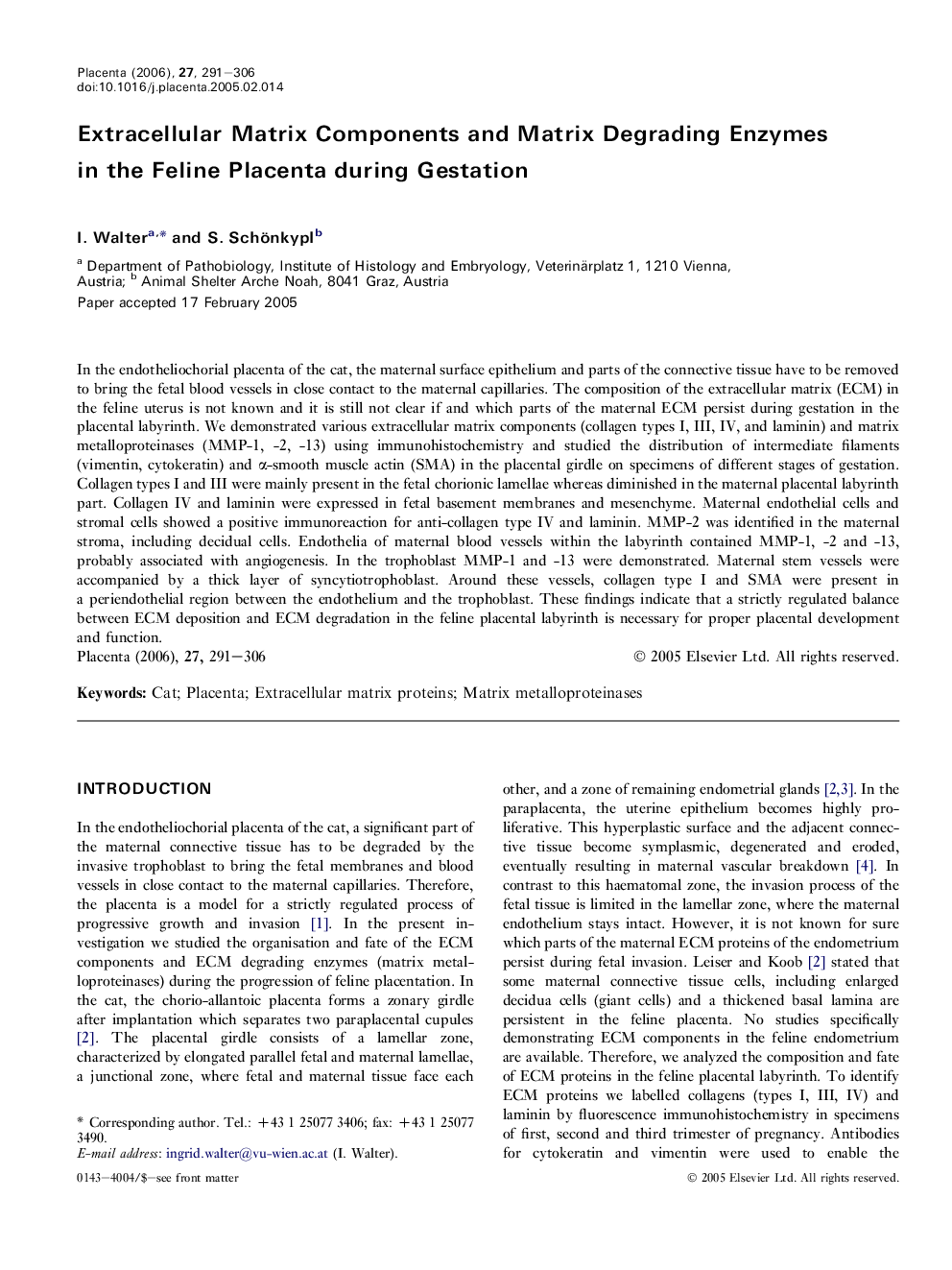| Article ID | Journal | Published Year | Pages | File Type |
|---|---|---|---|---|
| 2790171 | Placenta | 2006 | 16 Pages |
In the endotheliochorial placenta of the cat, the maternal surface epithelium and parts of the connective tissue have to be removed to bring the fetal blood vessels in close contact to the maternal capillaries. The composition of the extracellular matrix (ECM) in the feline uterus is not known and it is still not clear if and which parts of the maternal ECM persist during gestation in the placental labyrinth. We demonstrated various extracellular matrix components (collagen types I, III, IV, and laminin) and matrix metalloproteinases (MMP-1, -2, -13) using immunohistochemistry and studied the distribution of intermediate filaments (vimentin, cytokeratin) and α-smooth muscle actin (SMA) in the placental girdle on specimens of different stages of gestation. Collagen types I and III were mainly present in the fetal chorionic lamellae whereas diminished in the maternal placental labyrinth part. Collagen IV and laminin were expressed in fetal basement membranes and mesenchyme. Maternal endothelial cells and stromal cells showed a positive immunoreaction for anti-collagen type IV and laminin. MMP-2 was identified in the maternal stroma, including decidual cells. Endothelia of maternal blood vessels within the labyrinth contained MMP-1, -2 and -13, probably associated with angiogenesis. In the trophoblast MMP-1 and -13 were demonstrated. Maternal stem vessels were accompanied by a thick layer of syncytiotrophoblast. Around these vessels, collagen type I and SMA were present in a periendothelial region between the endothelium and the trophoblast. These findings indicate that a strictly regulated balance between ECM deposition and ECM degradation in the feline placental labyrinth is necessary for proper placental development and function.
